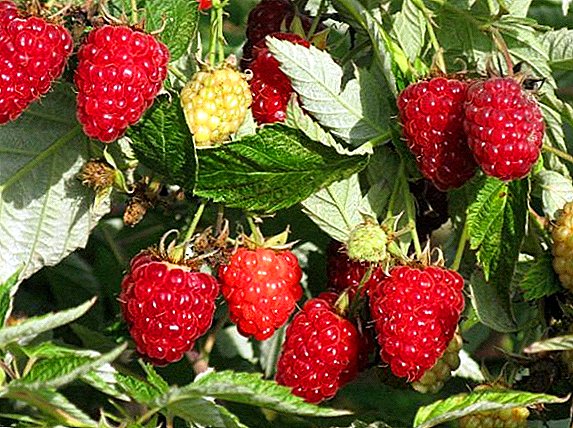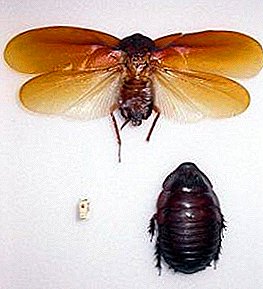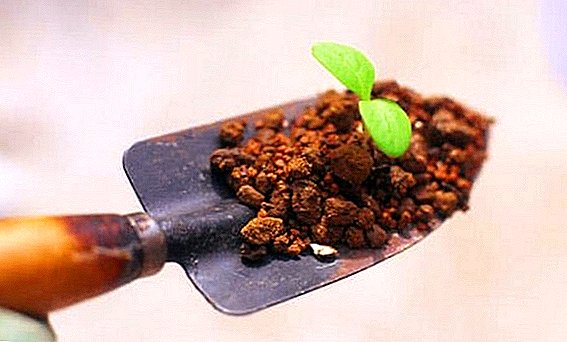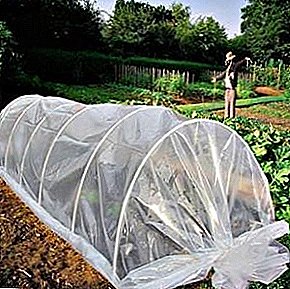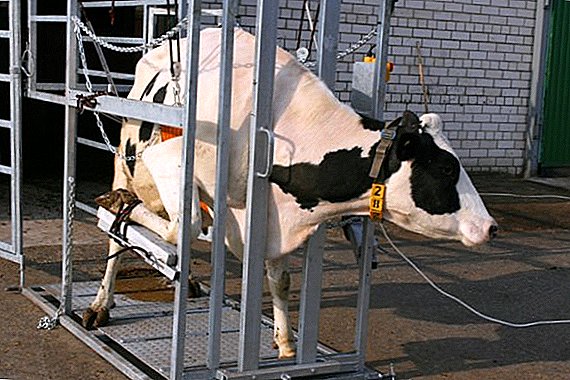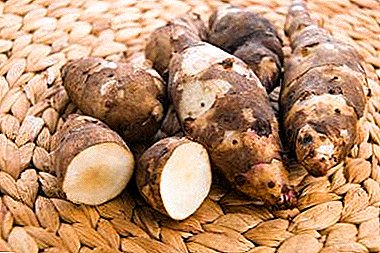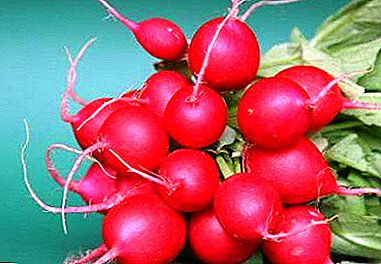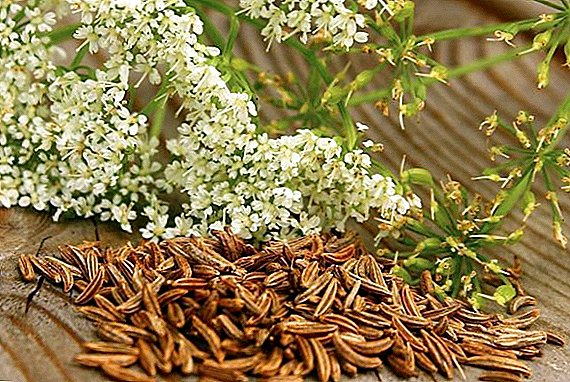 Anise and cumin - spices that have a wide range of applications in the food industry. Read more about what the spices differ from and what are their characteristics, read further in the article.
Anise and cumin - spices that have a wide range of applications in the food industry. Read more about what the spices differ from and what are their characteristics, read further in the article.
Description and characteristics of plants
Cumin and anise have long been cultivated by man, thanks to the unpretentiousness in the cultivation of them easy to care for.
Cultivation of plants involved in obtaining spices, which are added to various dishes, used in traditional medicine and cosmetic products. The botanical description and general characteristics of crops can be found below.
Anise
Spice is a representative of annual herbaceous plants, which are cultivated on a large scale for the food and pharmaceutical industry. Anise belongs to the family of Umbrella and the class of dicotyledonous plants.
Read more about anise and its application features.
The plant reaches a height of 50-60 cm. The shoots are thin, slightly pubescent, branched in the upper part. The rhizome is thin, it looks like a rod that does not contain branches. The lower leaves grow from the root system, they are located on long petioles and have a round shape. To the top of the plant, the leaf plates are shallow, have a wedge-shaped back.
 Inflorescences hold up to 17 flowers, the flowers themselves are presented in the form of umbrellas with a diameter of 7 cm. The spice blooms from June to October. The fruit is egg-shaped, flattened laterally. Seeds reach sizes of 5 mm, their color is gray.
Inflorescences hold up to 17 flowers, the flowers themselves are presented in the form of umbrellas with a diameter of 7 cm. The spice blooms from June to October. The fruit is egg-shaped, flattened laterally. Seeds reach sizes of 5 mm, their color is gray.

Chemical composition per 100 g of product:
- proteins - 17.6 g;
- fats - 15.9 g;
- carbohydrates - 35.4 g;
- dietary fiber - 14.6 g
The minerals that make up the spice:
- magnesium;
- sodium;
- iron;
- zinc.
Vitamin composition:
- retinol;
- vitamin C;
- choline;
- a nicotinic acid;
- pantothenic acid;
- thiamine;
- riboflavin.
Cumin
Cumin is a perennial herbaceous plant, a representative of the family of Umbrella. It is grown in areas with moderate climatic conditions. The rhizome is well developed, fleshy, thanks to its spindle-shaped structure, it takes root 20 cm deep.
Important! When planting cumin you should not expect a quick harvest of seeds, because the spice blooms and bears fruit, starting from the second year of life.
The leaves have a biconurist form, are arranged alternately on the shoot, elongated in the lower part of the stem, at the top they are shortened. The first year of growth of the culture is formed basal leaf rosette, the second year is the formation of shoots, which can be smooth or nodular, inside they are hollow.
 Cumin ordinary Flowers have 5 petals, painted white. Inflorescences are presented in the form of umbrellas. Fruits ripen in August. The most common varieties of spices are black and ordinary cumin.
Cumin ordinary Flowers have 5 petals, painted white. Inflorescences are presented in the form of umbrellas. Fruits ripen in August. The most common varieties of spices are black and ordinary cumin.  Black cumin
Black cumin
Chemical composition per 100 g of product:
- proteins - 19.8 g;
- fats 14.6 g;
- carbohydrate -11.9 g;
- dietary fiber - 38 g
Vitamin composition:
- thiamine;
- riboflavin;
- pyridoxine;
- beta carotene;
- vitamin C;
- phylloquinone.
Minerals included:
- potassium;
- calcium;
- magnesium;
- iron;
- phosphorus.
Read, than caraway is useful.
What is the difference between anise and cumin
There is a popular belief that cumin and anise are one and the same, because plants belong to the same family, they are often compared with fennel. But such an opinion is erroneous, and the distinction of spices by taste, aroma and botanical description confirms this.

Origin
People since ancient times engaged in the cultivation of spices. About the healing properties of anise is known from the records of Hippocrates, therefore, presumably, the spread of spices began in the Mediterranean.
Cumin is also the oldest culture cultivated by man. Spice began to spread from Eurasia.
Growing up
Cumin is a moisture-loving crop, able to tolerate small frosts at temperatures up to -5 ° C. For the cultivation of spices suitable regions with a temperate climate.
Did you know? To make cumin aromatic, it is necessary to warm it.
Anise is a heat-loving plant, therefore it is grown in the southern regions, which distinguishes spice from cumin.
Taste
Cumin has a specific bitter taste with a hint of nutty aftertaste. Anise has a sweet taste that resembles fennel.
Smell
Anise has a spicy scent, and cumin has a sweet, peppery flavor.
External differences
The fruits of the spices can be distinguished by:
- size;
- color;
- form.
Anise reaches up to 5 mm in length, the shape is ovoid, the color is gray or light brown.

Cumin - up to 7 mm in length, sunflower seed - crescent, slightly curved, brown or black, depending on the variety.

Ways to use
Seasonings have a wide range of applications, they are used in:
- culinary art;
- cosmetic purposes;
- traditional medicine.
Anise
Spice is widely used in the food industry, where the green part of the plant and seeds are used. Thanks to the pleasant aroma, seasoning is added to various dishes.

The use of spices in cooking:
- Greens spices are added to fresh salads and soups.
- Seasoning perfectly complements dairy products and meat sauces.
- Dishes from fish and meat are perfectly combined with anise, which is a part of seasoning from pepper-cumin mixture.
- In combination with coriander is added to bakery products.
The high content of retinol and potassium allows the use of spice in the manufacture of rejuvenating masks. Anise extract, which is part of the mask, penetrates deep into the epithelium and reduces the tone of muscle fibers, which, in turn, helps to eliminate fine mimic wrinkles.
Riboflavin and thiamine in the composition of ester spice can have a strengthening effect on hair. You can return the shine and softness of the hair, if you add 3 drops of essential oil of spices in a jar of shampoo.
Read more about the beneficial properties and contraindications of anise.
Anise fruits are considered a natural antidepressant.therefore, its use in the amount of 3 g per day will help get rid of depression and nervous breakdown. Due to the presence of vitamins B, magnesium and iron, the use of spices in the daily diet will help to normalize the metabolic processes in the body, improve intestinal motility and eliminate meteorism.
But when consuming spices, there are contraindications:
- pregnancy and breastfeeding;
- personal intolerance to spices;
- exacerbation of stomach diseases.

Cumin
Spice is used in culinary art and is part of:
- sauces and marinades for meat and fish products;
- bread dough;
- warming drinks;
- is an additive to cheese.
Spice is indispensable in the diet of women. Thanks to vitamins E and B, women can forget about brittle nails and hair, and most importantly, adjust the regularity of menstruation and eliminate unnecessary soreness in premenstrual syndrome.
The spice is able to increase the level of hemoglobin in the blood, as well as due to ascorbic acid, which is part of it, improve immunity and promote rapid recovery from colds.

Oil, made from cumin, is part of the cosmetics that are applied to the skin and hair. A total of 20 g of oil added to an ordinary face cream helps to rejuvenate and moisturize the skin.
Contraindications to the use of spices:
- the period of childbearing, due to the risk of miscarriage;
- cardiovascular diseases;
- asthma is contraindicated in the use of cumin because of the risk of suffocation during coughing;
- gastritis, gastric ulcer;
- gallstones.
Important! A daily intake of cumin with food in the amount of 3 g leads to a decrease in cholesterol levels and prevents the formation of blood clots in the vessels.
It is a mistake to believe that cumin and anise are the same culture, because they are completely different in appearance, smell and taste. The only similarity of spices is that they are very popular in the food and cosmetic industry.




